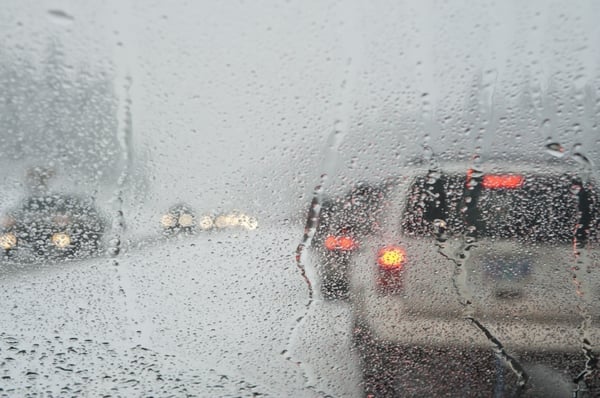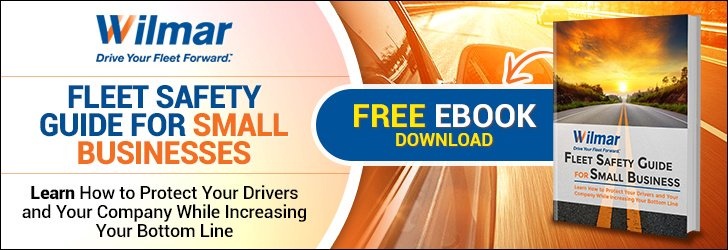
Even in regions that are buried in feet of snow every winter, everyday business continued. The plows clear snow from the roads and, no doubt, your business fleet drivers load out every morning to complete their usual routes. While you can count on your drivers to handle themselves in the snow and on icy roads, sometimes circumstances are beyond their control.
In cases of extreme winter weather, it's important that your fleet vehicles be packed for emergencies. From snow chains to emergency rations, we've put together a list of essentials that every fleet vehicle should be equipped with before you send your drivers out into icy conditions.
In best-case scenarios, being prepared will allow them to recover from a setback and complete the daily route. In worst-case scenarios, your forethought could save the lives of your drivers and teams.
For the Vehicle
Every driver on winter roads should be prepared to equip their car with extra traction and free themselves from surprise snow drifts. The vehicle half of the emergency kit should enable your drivers to do just that.
Tire Chains
Tire chains are a non-optional part of living and driving in many regions of the country. Not only should your drivers know where their tire chains are, they should also be practiced in applying and removing them in icy chain-up areas whenever necessary.
Jumper Cables
It's a known fact of vehicle ownership that car batteries die in the cold. And it doesn't just happen overnight. If your drivers stop and turn off the car for more than an hour in the course of daily service, there's a chance they'll come back to a dead vehicle. Jumper cables give them a potential solution, especially if you include a rechargeable 'jump box' so a second car is not necessary.
Tire Traction Mats and Road Salt
When the snow gets too deep even for chained-up winter tires, sometimes a fleet vehicle gets stuck. There are a number of solutions from kitty litter to cardboard boxes. We find the two best ways to break up ice and release tires from thick snow are traction mats and a bag of road salt.
Towing Gear
But just in case the snow is too deep, every one of your fleet vehicles should be prepared to be towed out of an emergency situation. Make sure tow hooks and chains are packed in an accessible location in the car for this purpose.
Fold-able Shovel
For anyone who lives and works in a region with snow, we shouldn't have to explain why a fold-able shovel in the car is a good idea. Whether you're digging out the car or looking for a dropped set of keys, a shovel is invaluable.
Flares
In case your drivers wind up sliding off the road or need to set up a safe perimeter, flares can be vital for receiving rescue in an emergency situation. Make sure there are several in each car.
2-5 Gallons of Gas
Finally, allowing a car to become low on gasoline is very dangerous in winter conditions. Not only can it cause trouble with the vehicle or make it impossible to 'rev' out of a snow bank, but gas is vital to keeping your team warm in case of stranding. Keeping a few extra gallons in the vehicle can save lives.
For Stranded Drivers
Of course, taking care of the vehicles and equipping them to escape snow traps is only half the duty of your emergency kit. If the worst happens and your team winds up stranded or waiting for rescue in freezing conditions, your kit can ensure that they survive the situation with as little hardship as possible.
Bottled Water and Ration Bars
Any emergency kit should include both water and emergency food stores, but this is especially important when people are stranded in the cold. Trying to dig a car out of the snow in cold winds can lead to severe dehydration and additional calories will be needed to maintain a safe body temperature.
Emergency Blankets
Blankets in your winter emergency kit are an obvious choice, but be sure to select blankets that are both very insulating and pack up tightly. We advise including at least two blankets. Some people consider additional woolly socks, fleece clothing (sweatshirts and sweatpants), and mittens to be practical additions as well.
Flashlight
Waiting in a dark car in the middle of a winter storm can be pretty scary, not to mention the need to see what's going on when trying to dig out of the snow or enact emergency vehicle repairs. A large, sturdy flashlight with long-lasting batteries is a key part of your emergency kit.
Warm Utility Gloves
Along the same lines, warm moisture-resistant utility gloves can literally save fingers of your team if they spend any amount of time trying to solve their vehicle problem before settling in to wait for help.
USB Battery and Car Adapter
Finally, make sure your team can call for help. Almost no form of wireless communication is guaranteed to work so try to cover your bases. A battery-powered radio is a good start. In case there is cell phone signal, include a car adapter charging cable and a portable USB battery to ensure your drivers have everything they need to make an emergency call.
You can learn more by checking out this article about the most common mistakes drivers make in the winter.
Packing your fleet vehicles for emergency winter situations can prevent hassle in mild cases and save lives in true emergencies. Be sure to include most or all of these items in the passenger compartment of the vehicle in case the trunk is frozen shut or otherwise inaccessible. For more fleet management tips this winter season, contact us today.







